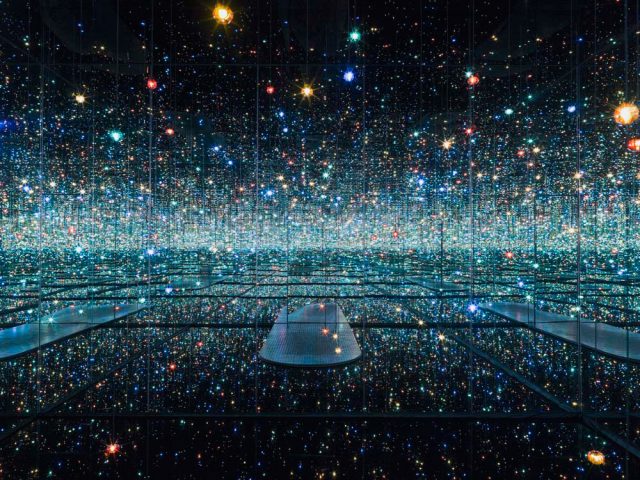I am intrigued by Yayoi Kusama’s series of Infinity Mirror Rooms, especially The Souls of Millions of Light Years Away (2013), which are installations held in a room surrounded by mirrors. The series of mirrors create endless reflections, creating an immersive experience for the audience. The Souls of Millions of Light Years Away makes use of hundreds of small LED lights, which gather to produce a dotted pattern in a seemingly-infinite space.
I admire this work for its heightening sensual experience and its ability to foster emotional connections. For its sensual aspect, I love how Kusama coordinated the rhythmic system of LED lights with a series of mirrors, which constructed visual depth. I believe that the synchronized visual effect effectively builds an isolated environment for the audience to contemplate their existence. Onto the second aspect, I am drawn to how Kusama includes a part of herself: her major inspiration came from her childhood experience of striking hallucinations with fields of patterns and dots. She began drawing her hallucinations as a way of treating her mental disease to control the anxiety, which became a foundation for her repetitive elements. Moreover, when the audience enters the room, they are immediately faced with a Droste effect. This effect is widespread on online platforms, which leads the audience to capture themselves in the infinity room with their phones. By capturing an infinite version of themselves spread throughout the room, the audience is able to visually observe their size in proportion to the infinite space and develop their own connections to the artwork.
In terms of the creation of the artwork, the series of LED lights hanging from the ceiling have been programmed to turn on and off in rhythmic patterns. It begins with subtle changes producing a soft glow into more rapid changes forming a staccato effect. At one moment, the audience is left in complete darkness. As the rhythmic pattern of the lights changes, I am assuming that code would have been used in the creation of this work, but I wasn’t able to find clear information about how this work was made.

